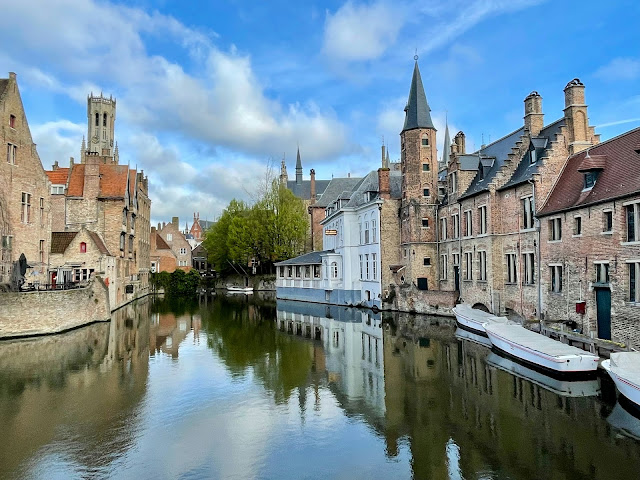New Orleans Landmarks: Beyond Jackson Square
New Orleans is a city that is rich in history, culture and charm. It is famous for its French Quarter, where you can find the iconic Jackson Square, the St. Louis Cathedral, the Cabildo and the Presbytère. But there is more to New Orleans than just the French Quarter. The city has many other landmarks that are worth exploring and admiring.
Here are some of the other landmarks in New Orleans that you should not miss on your next trip to the Big Easy.
Lalaurie Mansion
If you are a fan of horror stories, you might want to visit the Lalaurie Mansion, one of the most haunted locations in the French Quarter. This historic mansion was built in 1832 by Dr. Louis Lalaurie and his wife Delphine, who were notorious for torturing and killing their slaves in the attic.
The mansion was exposed in 1834, when a fire broke out and revealed the gruesome scene of mutilated and chained slaves. The Lalauries fled the city and never returned. The mansion was then looted and vandalized by an angry mob.
Since then, the mansion has changed hands several times and has been used as a school, a bar, a furniture store and a luxury apartment. It is currently owned by an anonymous investor who bought it for $2.4 million in 2013.
The mansion is not open to the public, but you can see its exterior and learn about its history on a ghost tour or a walking tour of the French Quarter.
The Sazerac House
If you are a fan of cocktails, you might want to visit the Sazerac House, a museum dedicated to the history and culture of New Orleans' signature drink, the Sazerac. The Sazerac is a cocktail made with rye whiskey, sugar, Peychaud's bitters and absinthe, served in a chilled glass rinsed with absinthe and garnished with a lemon peel. It is considered one of the oldest American cocktails and was named after the Sazerac de Forge et Fils brandy that was originally used as the base spirit.
The Sazerac House is located in a historic building that dates back to 1860 and was once home to an import company that sold Sazerac brandy. The museum opened in 2019 and features three floors of interactive exhibits, artifacts, videos and tasting rooms that showcase the history and evolution of the Sazerac and other New Orleans cocktails.
The museum is open Tuesday through Saturday from 10 a.m. to 6 p.m. Admission is free, but reservations are required. You can also book a guided tour or a cocktail class for a fee.
The National WWII Museum
If you are a fan of history, you might want to visit the National WWII Museum, one of the most popular and acclaimed museums in New Orleans. The museum was founded in 2000 as the National D-Day Museum, to commemorate the role of New Orleans in the Allied invasion of Normandy on June 6, 1944. The museum was designated as America's official WWII museum by Congress in 2003 and expanded its scope to cover all aspects of the war.
The museum covers six acres and features five pavilions that house exhibits, artifacts, vehicles, aircrafts, films and interactive displays that tell the story of WWII from different perspectives: The Home Front, The European Theater, The Pacific Theater, The Road to Berlin and The Road to Tokyo. The museum also features a 4D theater that shows Beyond All Boundaries, a film narrated by Tom Hanks that gives an overview of WWII.
The museum is open daily from 9 a.m. to 5 p.m. Admission is $29 for adults, $24 for seniors, $18 for students and $15 for military. You can also buy tickets for special attractions such as Beyond All Boundaries ($7), Final Mission: USS Tang Submarine Experience ($7) or PT-305 Boat Ride ($15).
St. Louis Cemetery No. 1
If you are a fan of cemeteries, you might want to visit St. Louis Cemetery No. 1, one of the oldest and most famous cemeteries in New Orleans. The cemetery was established in 1789 as the main burial ground for the city's Catholic population. It is located just outside the French Quarter and covers one square block. It contains more than 700 tombs and over 1000 vaults that house more than 100,000 people.
The cemetery is known for its above-ground tombs that resemble miniature houses, a tradition that was influenced by the French and Spanish colonists who wanted to emulate their burial customs in Europe. The cemetery is also known for its notable residents, such as:
- Marie Laveau, the legendary Voodoo queen of New Orleans, whose tomb is marked by a white pyramid and is often decorated with offerings and graffiti by her followers.
- Homer Plessy, the plaintiff in the landmark Plessy v. Ferguson case of 1896, which upheld the doctrine of "separate but equal" and legalized racial segregation in the United States.
- Nicolas Cage, the famous actor who bought a pyramid-shaped tomb in 2010 for his future burial. The tomb is inscribed with the Latin phrase "Omnia Ab Uno", which means "Everything From One".
The cemetery is open daily from 9 a.m. to 3 p.m., except on Mardi Gras Day. Admission is free, but you can only enter with a licensed tour guide or a family pass. You can book a tour with various companies that offer different themes and prices.
Mardi Gras World
If you are a fan of festivals, you might want to visit Mardi Gras World, a museum and workshop that showcases the behind-the-scenes of New Orleans' most famous celebration, Mardi Gras. Mardi Gras is a carnival that takes place every year before Ash Wednesday, the first day of Lent. It features parades, parties, costumes and floats that reflect the city's culture and history.
Mardi Gras World is located on the Mississippi Riverfront and was founded in 1947 by Blaine Kern, one of the leading float designers and builders in New Orleans. The museum and workshop offer visitors a chance to see how the floats are made, from the sketches to the sculptures to the painting. The museum and workshop also display hundreds of props, costumes and memorabilia from past Mardi Gras parades.
The museum and workshop are open daily from 9:30 a.m. to 5:30 p.m., except on Christmas Day, Thanksgiving Day and Mardi Gras Day. Admission is $22 for adults, $17 for seniors, $14 for students and $14 for children. The admission includes a guided tour that lasts about an hour and a slice of king cake, a traditional pastry eaten during Mardi Gras.




Comments
Post a Comment
It's easy to leave a comment on our blog – anyone with a Google account can do it. We invite you to share your experiences by leaving a comment as well.